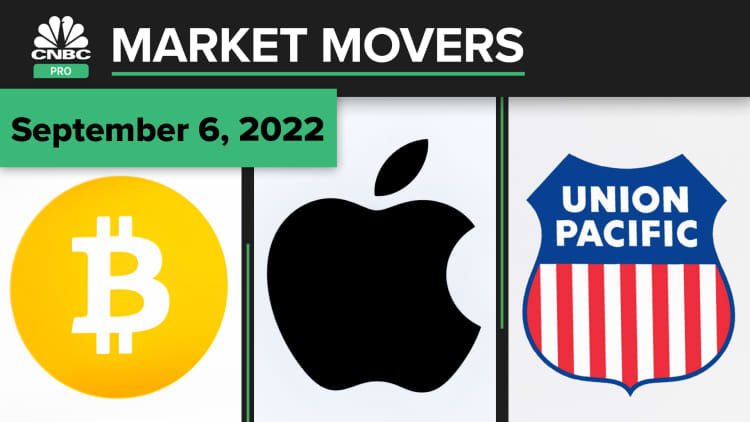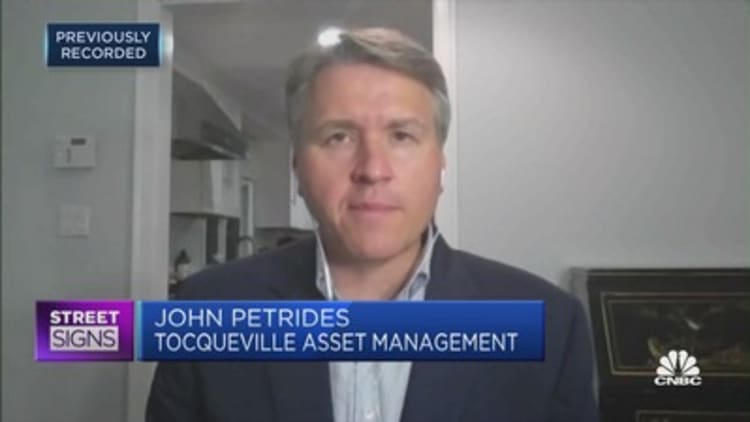
U.S. stocks slumped on Tuesday in a volatile trading session as investors weighed what strong economic data and rising rates mean for the Federal Reserve's aggressive tightening campaign.
The Dow Jones Industrial Average fell 173.14 points, or 0.55%, to close at 31,145.30, but was off the lows of the day, boosted by defensive stocks such as Johnson & Johnson and Coca-Cola. The S&P 500 slipped 0.41% to 3,908.19. The Nasdaq Composite slid 0.74% to 11,544.91, notching its seventh day of losses, its longest since 2016.
At the same time, bond yields surged, adding to the rout in stocks. The yield on the U.S. 10-year Treasury jumped as much as 0.162 percentage point to 3.353% at one point in the day. Yields move inversely to prices.
The moves came after August ISM data Tuesday morning was stronger than expected, coming in at 56.9 versus expectations of 55.5. The report follows Friday's jobs release, which also beat Wall Street's expectations, showing a more solid U.S. economy than anticipated.
Both reports come ahead of the Federal Reserve's September meeting, where they're expected to raise interest rates again. Better-than-expected economic data may mean that the central bank continues to act aggressively in hiking interest rates.
On Friday, the major averages closed out their third negative week in a row. The Nasdaq Composite posted its first six-day losing streak since 2019, ending the session 1.3% lower, while the Dow erased a 370-point gain on Friday to close about 1.1% lower. The S&P shed 1.1% to its lowest close since July.
"Bulls hoping for a rebound will be doing so during a shortened Labor Day week that historically has paralleled September and its track record of underperformance: Losses have been slightly less frequent over the past three decades, but volatility has been higher," said Chris Larkin, managing director of trading for E*Trade from Morgan Stanley.
In the holiday-shortened week, investors are looking ahead to speeches from Federal Reserve presidents and a fresh rate hike decision from the European Central Bank due out later this week.



